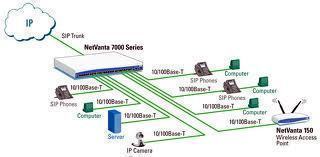What is SIP Trunking?
Some ITSPs (Internet Telephony Service Providers) offer a service called an SIP trunk, which allows PBX services to use VoIP (Voice-over-IP) services outside of the enterprise network via the same connection as that used for the Internet. As a result, SIP trunking services can save an organization a significant amount of money as it eliminates the need for additional VoIP hardware or software for the organization’s network. The minimum equipment required to use SIP trunking is a PBX, ITSP, and an edge device for coordinating the routing of SIP traffic.
SIP Trunking Advantages
SIP trunking has increased in popularity with organizations or enterprises that desire to fully leverage their installed IP-PBXs to communicate within and outside the organization. The SIP trunk lets a company replace the traditional PSTN lines with the PSTN connection provided through the SIP trunking service over the Internet. This can also eliminate the need to have local PSTN gateways, PRIs (Primary Rate Interfaces), and ISDN BRIs (Basic Rate Interfaces).
What are the Components Necessary for SIP Trunking?
The three components required to deploy an SIP trunk are an Internet SIP trunking service provider (ITSP), a PBX that has an SIP-enabled trunk side, and and enterprise edge device that is SIP capable. The ITSP provides the required connectivity to the Public Switched Telephone Network (PSTN) for incoming and outgoing communication with fixed and mobile phones. PBXs are normally IP-based and communicate with endpoints across the organization, but can also be the older analog or traditional digital types. The only requirement for the PBX is that it has an interface that can be used for SIP trunking. The enterprise border element connects the PBX on the network to the ITSP. This can either be a firewall with SIP support or another device connected to the firewall that is designed to handle the network’s SIP traffic.


Comments - No Responses to “What is SIP Trunking?”
Sorry but comments are closed at this time.